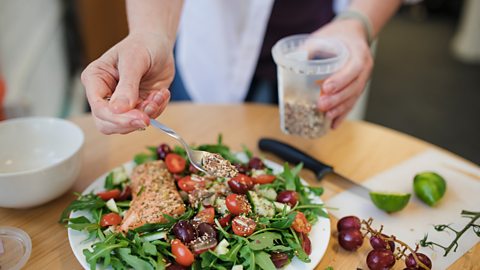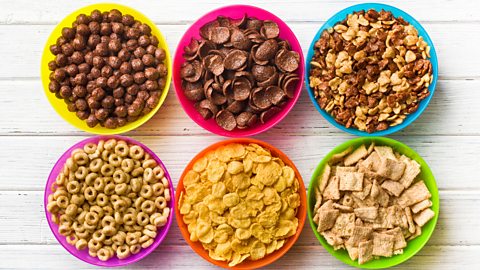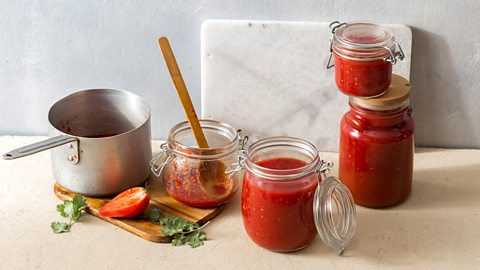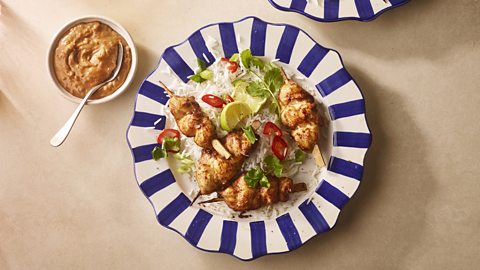8 retro corner shop foods we want to bring back
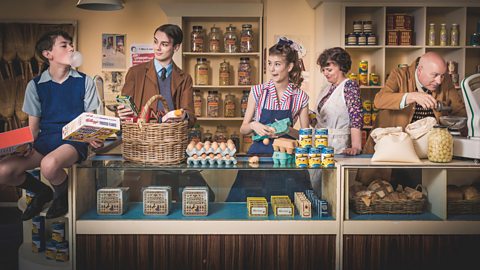
We pop into them when we’re on the way home to make sure we’ve got milk for our tea and run to them in a panic when we realise we’ve got friends coming round and no biscuits in. We are of course talking about the humble corner shop. We say ‘humble’, but they’re actually far from it – they and the people who manage them are the celebrities of our streets!
In BBC Two series Back in Time for the Corner Shop, the glorious small-but-perfectly-formed outlet is celebrated. And one lucky household, Sheffield’s Arden Family – mum and dad Jo and Dave and their kids Sam, Olivia and Ben – get to experience exactly how vital the corner shop has been to our nation through history.
With each episode exploring a different era, we’re about halfway through the series and we’ve come across food and drink we’re very intrigued by – whether that’s because it looks tasty and we want to eat it or because we want to see, first-hand, if it’s as bad as it looks…
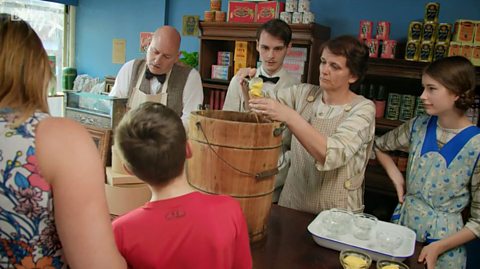
Homemade custard ice cream
It’s 1920 and there’s still no refrigerator in the kitchen where Jo and Olivia spend most of their time. But why let that stop them from making ice cream? With a recipe provided by a custard retailer, they set about making the dessert, replacing eggs with powder. They have to mix it in a complicated contraption that looks like a butter churner with ice surrounding it. And they chisel the ice themselves, from a gigantic block.
It takes a fair few hours to make the ice cream, but the yellow frozen treat is very well received by the customers in the shop, and the family get to enjoy the leftovers with their tea – they even throw a chocolate flake into the mix! It looks AMAZING. And we want it. All of it. Every little last scrape that’s in the butter churning-esq bucket.
So, a massive success all-around? Kind of. The hours that go into making it and the speed at which it melts mean it’s not the simplest of treats to produce and sell. But apparently back in the 1920s it inspired Walls to make ice cream.


Balmoral tartlets
When was the last time you went to the shops and bought bakes made by the shopkeeper’s family? Okay, that might (just) have happened. But was it based on a recipe that appeared in a local newspaper to celebrate royalty coming to town? We’re going to guess the answer is ‘nope’.
Back in the Victorian era, a fair amount of the goodies in the corner shop were homemade, and in the first episode of Back in Time for the Corner Shop these Balmoral tartlets feature, based on a recipe that appeared in the Sheffield Telegraph in 1897 to celebrate Queen Victoria's upcoming visit to the South Yorkshire city as part of her Diamond Jubilee celebrations. Jo and Olivia make the sweet treats, which involve homemade shortcrust pastry cases filled with a sticky mix that includes glacé cherries.

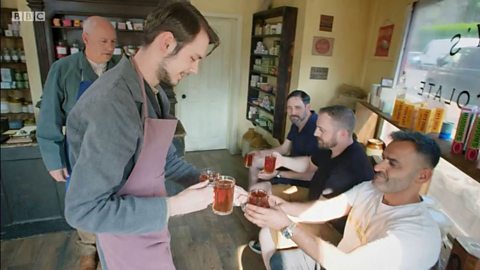
Beer on tap
It’s been a long old week at work and you want to celebrate with a pint. So you pop to the corner shop, but alas, you’ve left your glass at home – you’d better go back, grab it, and come back again. Yep, in the late 19th century, if you fancied a drink you could (just like today) call into the corner shop on the way home – but you’d need your own drinking vessel.
In episode one, we learn that in 1898 the owner of the Sheffield shop the TV series is based on, Fred Horsfield, applied for a licence to sell beer – so the Arden family do the same. And the cost to customers for the locally produced real ale? Tuppence a pint. Not bad, though once you work out the inflation it’s not quite as cheap as it seems, at £1.54.

Barracouta fritters
In episode three, the Arden family offer tasty fritters – at a price. But, they’re not overwhelmingly popular…
“Oh god, we sold them!”, says Sam, after tasting them for the first (and almost certainly last) time. The horror at the realisation they had charged locals for the fish ‘treat’ seemed a trifle unfair on the shop’s clientele.
So what is barracouta and why were they a big deal in the ’50s? Well, rationing was still in place and meat not plentiful, so the government imported 11,000,000 cans of barracouta fish and then gave some serving suggestions, including these fritters.
They don’t look bad, but apparently taste horrendous. The cans of fish were eventually sold off as cat food.
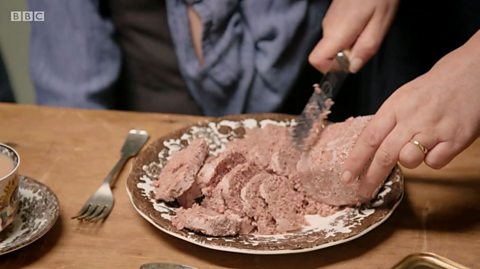
Corned mutton
Around the time corned beef arrived on our shores in the Victorian era, so did this New Zealand delicacy. And it looks, erm, rather unenjoyable. Still, the can is nice and bright! The idea of tinned food was incredibly exciting back then, as it meant that for the first time people could tuck into foods shipped in from far-flung countries across the British Empire. Until then, tins had only really been used to preserve rations for the country. “But by 1900 we were importing half our food”, explains Sara Cox in the programme.
How do the Ardens feel about the meaty paste? Well, when Jo brings it to the table, Olivia exclaims “oh no”, which doesn’t bode well.
“It doesn’t smell that pleasant either does it?”, says Jo, as she opens the tin using the key on the side of it. Youngest son Ben is nominated to try it first. Is it as bad as it looks? “It’s not that bad”, he says, before the rest of the family tuck into corned mutton sandwiches.
See, maybe we need corned mutton back in our lives to remind us that looks can be deceiving!

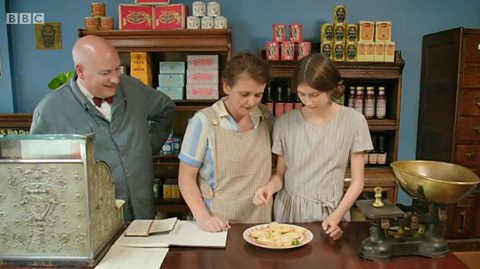
Mint and currant pasties for a penny
As Jo reads out the ingredients, “currants, mint, sugar and water”, Olivia lets out an “eurghhhh”. OK, we get that these came out of necessity in the ’20s (1921 to be exact) because people couldn’t afford meat, but as pasty fillings go it’s not that bad, is it? We’d definitely try nibbling on one or two.
Plus, when Dave, Jo and Olivia try one, they all seem to have a smile on their faces. Yep, sign us up for one please.

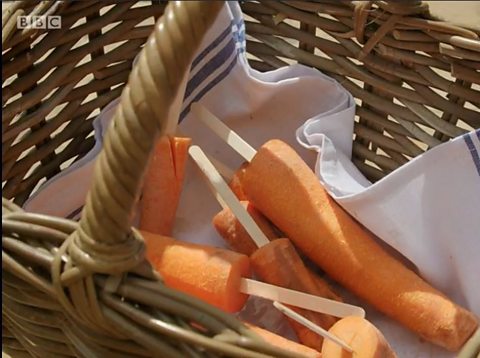
Carrot lollies
You know when you’re in the shop and you hear kids pleading for sweets? There’s always a battle about how they will ”cause your teeth to fall out”, or the old classic, ”no, means no!”.
However, there may be a solution with this common issue. Carrot lollies. Yep, back in the time of the Second World War, with sweets no longer readily available, people turned to another option: the aforementioned ‘carrot lollies’. What were they? Erm, carrots on a stick.
The reason why carrots became ‘popular’ in 1942 was because farmers had grown so many of them that there was a surplus of 100,000 tonnes. Hence, these marvellous treats. They don’t sound too bad, actually!

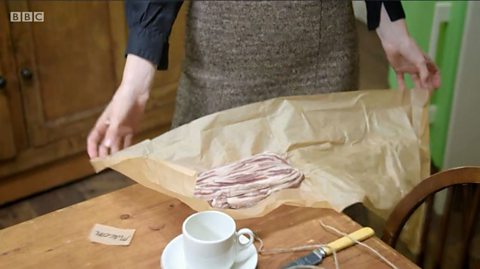
‘Macon’ (can you guess what it is?)...
No, that’s not maple-flavoured bacon. It’s bacon made of mutton. During the first few years of World War II, this was suggested by the Ministry of Food because of the shortage of pork. In the show it looks like bacon, albeit with a brown tint (when raw), but does it taste like bacon? Well, no, the family is all pretty much horrified by it.
But we want to know exactly how bad it was, please let us try it…
Watch Back in Time for the Corner Shop on BBC Two on Tuesday at 8pm or catch-up on iPlayer.

